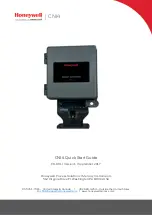
050
www.ruggedaq.com
DATALOGGER
NI2400
NI2400
051
www.ruggedaq.com
DATALOGGER
NI2400
NI2400
• then, the page
mulTiplExEr
configurATion
opens. This page allows the sensors insertion
thanks to three buttons:
Add
6
wirES
SEnSor
,
Add
4
wirES
SEnSor
and
Add
2
wirES
SEnSor
.
• for example, if you push on button
Add
4
wirES
SEnSor
in the underlying table a 4 wires
sensors is added and it is possible to configure it.
• pushing on
EdiT
it is possible to set up all sensor parameters, as you do for a local analog
channel. The configuration of an analog channel on multiplexer is not different from that
of a local analog channel.
NOTE:
once the configuration of all channels of multiplexer ended, it is advised
to push on LOCK. In this way, the configuration is “blocked” and the removal
of one or more sensors doesn’t modify the position of those that are config-
ured yet.
ATTENTION:
the addition of a new sensor to a multiplexer that has been already
configured could cause a change in sensors position on multiplexer channels.
In case of sensors that are physically already connected to the multiplexer, it is
necessary to check that their positions are the same. If the positions changed,
it is necessary to re-wire the sensors to the multiplexer.”
MODBUS SENSORS
What’s Modbus?
Modbus is a serial communication protocol, made by Modicon in 1979 to link their PLC. It
has become a de facto standard in communication protocol, and it’s now a commonly avail-
able means of connecting industrial electronic devices.
Advantages in industrial sectors are:
• developed with industrial applications in mind
• openly published and royality-free
• easy to deploy and mantain
• moves raw bits or words without placing many restriction on vendors
Modbus enables communication among many devices connected to the same network, for
example a system that measures temperature and humidity and communicates the results to
a computer. Modbus is often used to connect a supervisory computer with a remote terminal
unit (RTU) in supervisory control and data acquisition (SCADA) systems. Many of the data
types are named from its use in driving relays: a single-bit physical output is called a coil, a
single-bit physical input is called a discrete input or a contact.
OBJECT TYPE
ACCESS
SIZE
Coil
Read-Write
1-bit
Discrete Input/Contact
Read-Only
1-bit
Input Register
Read-Only
16-bits
Holding Register
Read-Write
16-bits
Figure 36
Figure 37
3
3















































